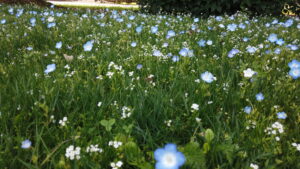Grasses are getting the attention of public and private breeding companies to fit select markets that go unseen. At a recent National Association of Plant Breeders (NAPB) meeting, I was exposed to growing markets for “certified” triticale for high-yielding forage production, grasses being used for inter-row crop production (i.e. Continuous Living Cover) and even a branded perennial grass called KERNZA¬® that produces grain, used as a flour, or malted for use in beer all in a sustainable manner. This is on top of high-quality turfgrass programs already scattered across this country to fulfill homeowners’ lawn needs.
This recent NAPB Annual Conference revealed young plant breeders passionately utilizing many breeding techniques including genomic editing in many different crops (including grasses) in the U.S. and around the world. Much of this early work is funded by governmental or industry grants. However, when it comes to commercialization of these seed innovations an economic driver needs to be in place.
Seed companies have opted to utilize Plant Variety Protection (PVP) certificates and some U.S. patents. According to Jeffery Haynes, USDA PVPO Commissioner, there have been approximately 1,200 PVP certificates granted for grasses since the 1970s.
Some seed companies have supplemented this with “seed certification” as administered by each states’ crop improvement association. Seed certification follows a rigorous seed certification process that ensures top-quality seed or turf that is free from weeds, disease, and pests. A Blue Tag certificate is the “indicator” that ensures a high-quality product for the consumer.
A select set of companies may take this further and sell “certified seed” with a “single use agreement” that disallows saving of seed for planting the following season. This mechanism is put in place so that the breeding group receives royalties for funding future breeding.
Another mechanism that ensures consumers receive a quality product (i.e. Truth in Labeling) is the Federal Seed Act as administered by each states Seed Control Official or similar state agency. Key components include proper labeling of the variety (varieties if a blend), percentage of weed seed, percentage of germination, percentage of noxious weed seed, seed company and origination among other key items that should be listed on a seed label. Grass seed labels MUST contain these elements on the bag to ensure transparency of the product consumers are purchasing. The Association of American Seed Control Officials (AASCO) coordinates key labeling elements across all U.S. states via a RUSSL document (Recommended Uniform State Seed Law). Any seed crossing state lines is governed by this
document.
Seed labeling transparency is key to growers receiving a high-quality seed product especially grasses which are transacted via many channels including electronic marketplaces. Evidence of the extent some seed companies may take to disregard IP and regulatory statues include recent Kentucky 31 grass seed mislabeling issues in Oregon. Significant fines and even jail time were the consequences. Another example is the mysterious seed packets mailed to U.S. consumers from China with little to no information which caused a coordinated effort lead by the American Seed Trade Association to investigate … many feared potential noxious weeds or disease issues.
Grasses whether for turfgrass, cover crops, pastureland or even grain production require investment to provide end users with improved genetics, pest/disease tolerance, nutritional value or just pleasing aesthetics. Plant breeders are doing their part but there must be an economic incentive for the development of new seed innovations! Intellectual property rights motivate investment by seed companies to meet growers’ unmet needs to feed a hungry planet! Don’t step over the line …. always buy NEW professionally produced seed from authorized seed companies and dealers!













